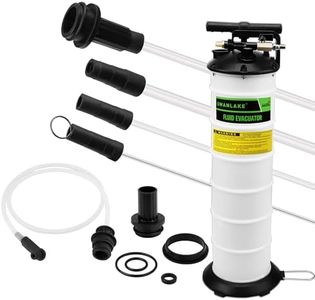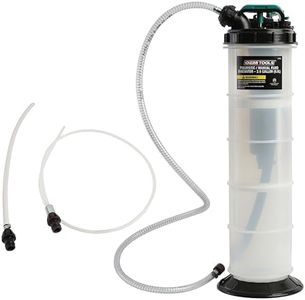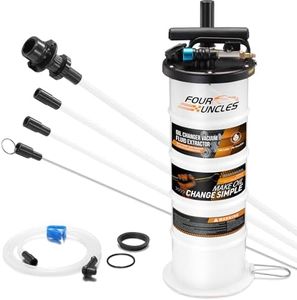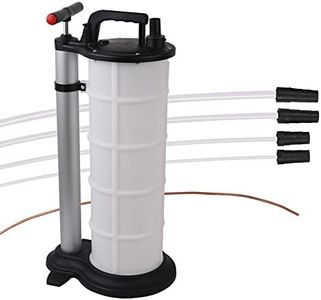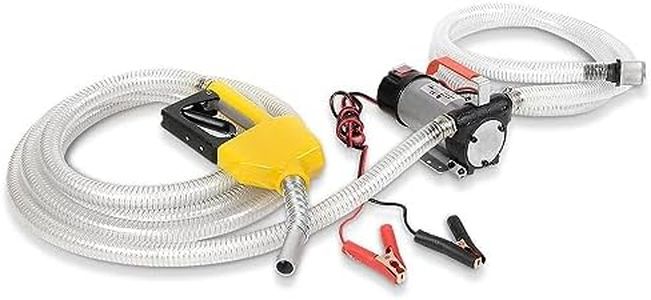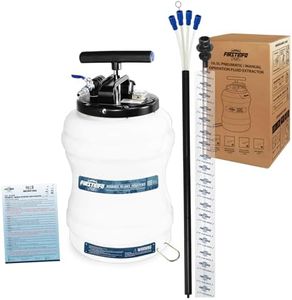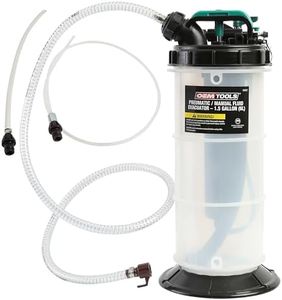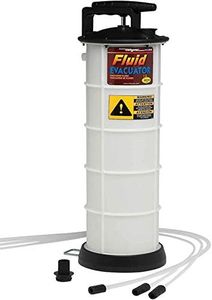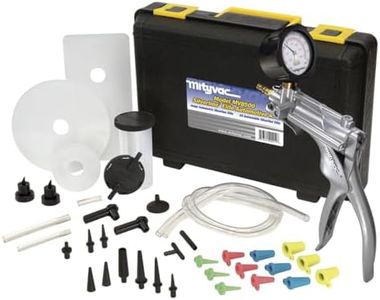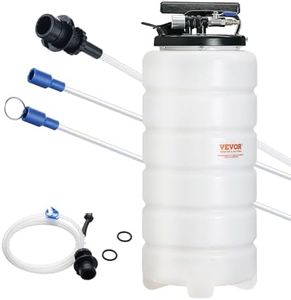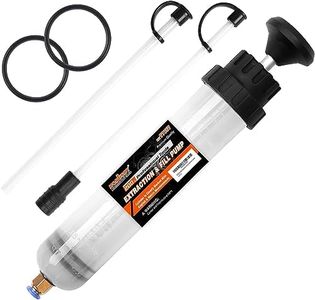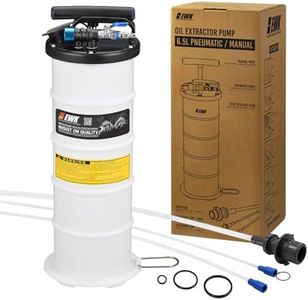We Use CookiesWe use cookies to enhance the security, performance,
functionality and for analytical and promotional activities. By continuing to browse this site you
are agreeing to our privacy policy
10 Best Oil Extractors
From leading brands and best sellers available on the web.Buying Guide for the Best Oil Extractors
When selecting an oil extractor, it's important to consider your typical use cases, such as whether you'll be changing oil in cars, boats, or other machinery. Oil extractors are useful because they allow clean and convenient removal of engine oil without having to crawl under a vehicle or remove drain plugs. The right extractor for you will depend on how often you plan to use it, the type of engines you’ll be working with, and your preferences regarding manual effort versus automation. Understanding the main specifications will help you pick a model that is both easy to use and suited to your needs.CapacityCapacity refers to how much oil the extractor can hold in one use, typically measured in liters or quarts. This is important because a larger capacity allows you to drain all of the oil in one go, especially useful for bigger engines or when dealing with multiple vehicles. Small extractors usually hold about 2-4 liters, which works well for small engines or infrequent use. Medium capacity models (around 6-8 liters) are suitable for common car oil changes, while high-capacity units (above 10 liters) are best if you regularly work on large vehicles or multiple machines. To pick the right capacity, consider the oil volume in the engines you’ll service most frequently; choose slightly higher than your largest oil change to prevent spills or the need to empty mid-job.
Extraction MethodThe extraction method describes how the device creates suction to pull oil from the engine. Common types include manual pumps (using hand or foot pressure), pneumatic (air-powered using a compressor), and electric (plug-in or battery operated). Manual types are portable, require no power source, but need physical effort, ideal for occasional home use. Pneumatic extractors work faster and require less effort but need access to an air compressor, suiting workshops or regular users. Electric models are very convenient and quick but depend on batteries or electricity and may be heavier. Your ideal choice depends on how often you’ll use the extractor and whether you prefer portability or automation. If you want convenience and speed, and have the necessary equipment, go for pneumatic or electric. If you value simplicity and portability, a manual pump will serve well.
Tube Diameter and LengthTube diameter and length determine whether the extractor can reach the bottom of the oil sump and fit into the dipstick tube. A thin tube is necessary for fitting into small or narrow openings, while a longer tube can be helpful for deeper or more awkwardly shaped oil pans. Thin tubes (about 4-6 mm) are best for motorcycles or small engines, and slightly wider tubes (6-10 mm) are suited for most cars. Tube length can vary from about 1 to 2 meters; make sure the tube is long enough to comfortably reach from the oil tank to your container. When choosing, check your engine’s requirements and opt for a model with interchangeable tubes for maximum versatility.
MaterialMaterials used in oil extractors influence both their durability and maintenance. Most extractors are made from plastics, metals, or a combination. All-plastic units are light and corrosion-resistant but may be less robust, so they’re well-suited for light, infrequent use. Metal or mix-material extractors tend to be tougher and last longer, especially if you'll use them often or with hot oil, but they may be heavier and more expensive. Consider how often and in what environments you’ll use the extractor; go for more durable materials for frequent or heavy-duty applications, and lighter alternatives if you need something easy to carry for occasional jobs.
Ease of CleaningEase of cleaning is about how simple it is to rinse and maintain the extractor after use. Some models have wider openings for access, or are designed to come apart for thorough cleaning, which is important to prevent oil residues from building up and to ensure long service life. If you value hassle-free maintenance or plan to use the extractor on multiple types of oils (like engine vs. transmission), choose a model that disassembles easily and is compatible with standard cleaning fluids. If oil changes are infrequent, a basic model that is easy to rinse may be enough.
